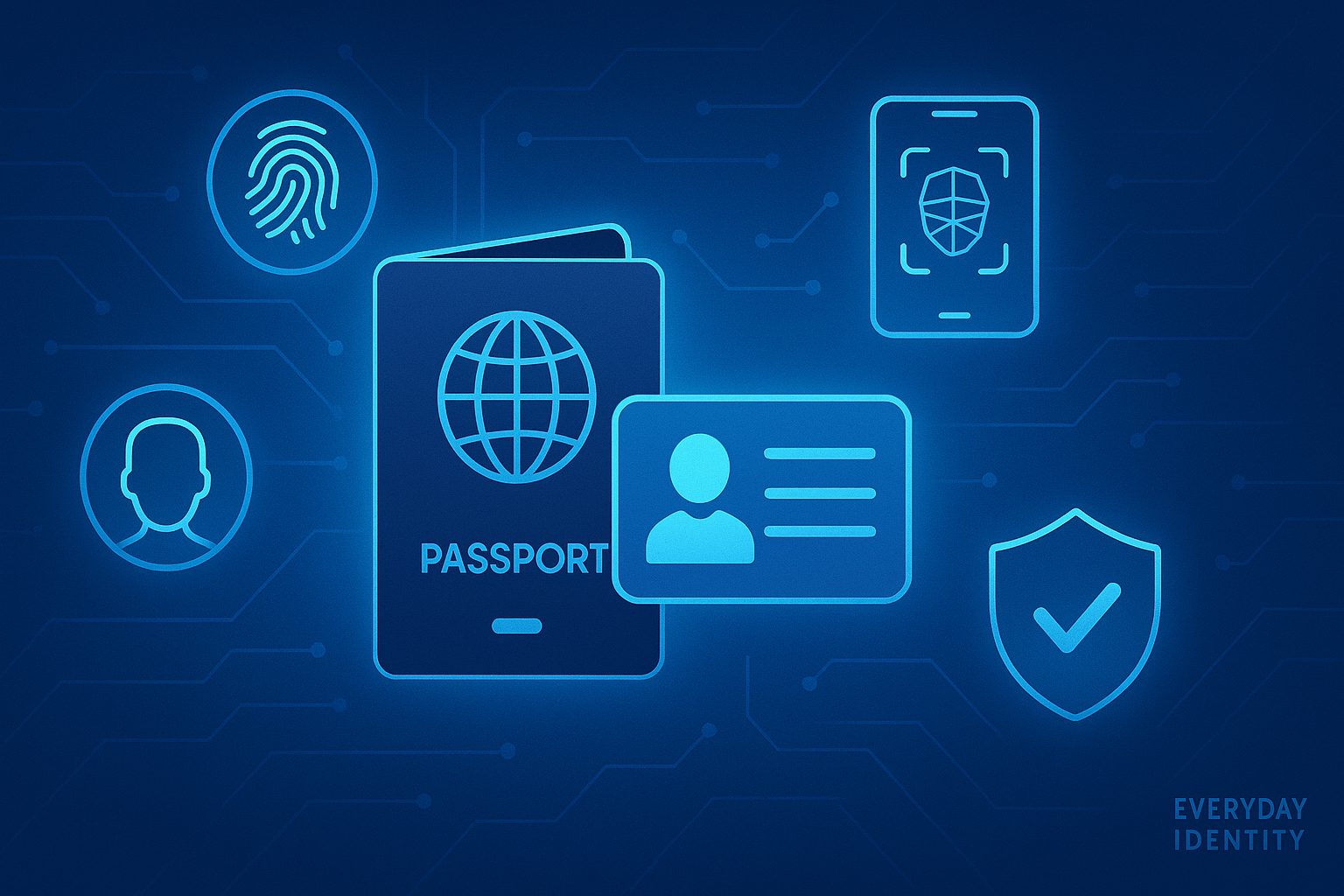
Introduction: Why 2025 Is a Turning Point
Digital onboarding has always been a balancing act: verify people quickly, securely, and seamlessly—without driving them away. In 2025, the balance is shifting once again. New regulations, emerging biometric technologies, AI-powered fraud, and rising consumer expectations are rewriting the rulebook on how organizations prove who someone really is.
In this post, we’ll break down what’s changing in identity proofing and onboarding, why it matters, and how to build a secure, user-friendly digital identity journey.
The Evolution of Identity Proofing
Identity proofing is no longer about scanning a driver’s license and hoping for the best. In 2025, we’ve entered an era where proofing is:
- Continuous, not one-time. Identity validation isn’t just at onboarding—it’s monitored throughout the lifecycle.
- AI-assisted. Machine learning models detect fraud patterns, deepfakes, and suspicious behaviors at scale.
- Regulation-driven. Standards like NIST SP 800-63, eIDAS 2.0, and PSD2 push for stronger, interoperable proofing across borders.
- User-centric. Friction must be minimal; people expect mobile-first and instant onboarding.
Trend #1: Biometrics Take Center Stage
Biometrics aren’t new, but 2025 marks their mainstream moment in onboarding:
- Face ID and liveness checks. Advanced algorithms distinguish between a real person and a photo, video, or AI-generated fake.
- Behavioral biometrics. Keystroke dynamics, mouse movements, and mobile sensor patterns add invisible proofing layers.
- Voice authentication. Increasingly used in call centers and financial services, with new protections against AI voice spoofing.
The shift: biometrics are now the front door to onboarding, but must be combined with other signals to remain resilient against deepfake threats.
Trend #2: The Rise of eID (Electronic Identity)
Governments worldwide are rolling out digital identity frameworks. In 2025:
- EU eIDAS 2.0 is reshaping onboarding in Europe with interoperable “digital wallets.”
- U.S. state eIDs (like mobile driver’s licenses) are becoming accepted by banks, healthcare providers, and employers.
- Cross-border trust is emerging, allowing one verified eID to streamline onboarding across industries.
The opportunity: organizations that embrace eID can reduce friction, speed up onboarding, and build trust with globally mobile users.
Trend #3: Liveness Checks Evolve Against AI Fraud
Generative AI has made fake identities nearly indistinguishable from real ones. In response, liveness detection has evolved:
- Passive liveness. Users no longer need to blink, smile, or turn their head—cameras assess authenticity silently.
- 3D mapping. Depth sensors detect physical presence beyond flat images.
- AI vs. AI. Identity vendors now use adversarial AI to stay ahead of fraudsters.
Key takeaway: organizations must constantly update proofing defenses, or risk becoming victims of identity fraud 2.0.
Trend #4: Seamless Digital Onboarding Journeys
Onboarding in 2025 isn’t just about security—it’s about experience.
- Frictionless verification. Combining device signals, geolocation, and risk scoring means fewer password prompts.
- Progressive proofing. High-risk transactions trigger additional verification only when needed.
- Omnichannel identity. Users expect consistent onboarding whether online, in-app, or in-person.
For organizations, the challenge is clear: secure onboarding must feel invisible to the legitimate user.
Building Secure Onboarding in 2025: A Practical Guide
Here’s how organizations can align with the latest identity proofing trends:
- Adopt a layered approach. Combine biometrics, eID, and behavioral analytics—never rely on a single factor.
- Integrate liveness checks. Ensure your onboarding solution can withstand deepfake and AI-spoofing attacks.
- Enable progressive verification. Minimize friction for low-risk users, while escalating proofing for anomalies.
- Stay regulation-ready. Align with frameworks like NIST, eIDAS 2.0, and local compliance mandates.
- Design for humans. Build mobile-first onboarding with accessibility and inclusivity at the core.
The IAM Connection: Proofing Is Access
In the broader Identity and Access Management (IAM) landscape, digital onboarding is the first step in lifecycle management. Poor proofing equals weak IAM foundations.
- Strong identity proofing → Strong access policies.
- Weak proofing → Elevated risk of account takeover, fraud, and compliance failures.
This is why IAM leaders must treat onboarding as part of Zero Trust—not a siloed process.
Looking Ahead: The Future of Proofing
As we move deeper into 2025 and beyond:
- Identity proofing will merge with continuous authentication. It won’t stop at onboarding—it will flow through the user journey.
- Decentralized identity will grow. More organizations will experiment with blockchain-based credentials.
- Human-in-the-loop (HiTL) checks will remain critical. AI can catch patterns, but human oversight is still needed for edge cases and compliance assurance.
Conclusion: Proofing Is the New Competitive Advantage
Digital onboarding isn’t just a compliance box to check—it’s a trust signal. In 2025, users will choose platforms that let them onboard quickly, securely, and confidently.
Organizations that embrace biometrics, eID, and advanced liveness checks—while keeping the human experience central—will not only reduce fraud but also gain a competitive edge.
Identity proofing is no longer just about “who are you?” It’s about “who do we trust—and how fast can we trust them?”
✅ Accuracy Badge
Grounded in 2025 identity proofing trends (biometrics, eIDAS 2.0, liveness detection). Balanced insights on IAM integration and user experience. Slight forward-looking projections may vary by geography.
